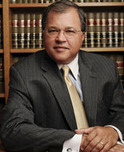Posts Tagged ‘Massachusetts’
Product Recall: More than 10,000 Fuji Bicycles Recalled
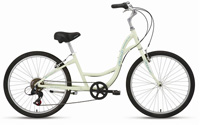 The U.S. Consumer Product Safety Commission announced the recall this week of more than 10,000 defective bicycles after reports the product’s frame was breaking.
The U.S. Consumer Product Safety Commission announced the recall this week of more than 10,000 defective bicycles after reports the product’s frame was breaking.
Fuji Saratoga Women’s Bicycles recalled about 10,500 bicycles sold nationwide from November 2007 through December 2011. The bicycles were recalled after the company became aware of 12 reports of bicycle frames breaking. There were two injuries reported, including a head laceration requiring 20 stitches.
The product’s defect is its frame was breaking in the center of the downtube during use, causing bicyclists to lose control and fall. Bicyclists are instructed to stop riding and seek a replacement bike frame.
About the recalled Fuji women’s cruisers bicycles:
- 2008 to 2010 models of Saratoga 1.0, Saratoga 2.0, Saratoga 3.0 and Saratoga 4.0. The model type will be printed on the bike.
- The bikes come in various colors.
- The bikes will have the words “Fuji” and “Saratoga” alone or “Saratoga” printed on the frame.
- Serial numbers beginning with ICFJ7, ICFJ8, ICFJ9, ICFJ10 and ICFJ11. The serial number is located on the bottom of the frame near the crank.
The defective products were imported by Advanced Sports, Inc. of Philadelphia and manufactured in China. They were sold at specialty bike shops.
Customers are instructed to obtain a free replacement frame. They can contact Advanced Sports Inc. toll-free at 888-286-6263 between 8 a.m. and 4:30 p.m. Monday through Friday or visit www.fujibikes.com. They can also return the bike to any authorized Fuji Bicycle dealer for the free part.
Click here for more information on this recall.
In a smaller recall, the Mountain Bicycle Handlebar Stem has been recalled in the U.S. and Canada. Some 213 units were recalled in the U.S. and 83 in Canada by the importer, Shimano American Corp. of Irvine, Calif. The defective bicycles were sold at REI stores nationwide from October 2009 to November 2010 for about $120.
The bicycles were recalled because the bolt holding the front plate of the stem to the stem body can be pulled out of the threads while the bike is being ridden, causing the rider to fall. There has been one report of a rider falling and sustaining torso and arm injuries. Click here for more information on this recall.
The Boston product liability lawyers at Breakstone, White & Gluck have over 80 years combined experience handling complex cases involving serious personal injuries, wrongful death and defective products. We have obtained clients compensation in cases involving defective motor vehicles, recalled medical devices and dangerous pharmaceuticals.
If you have been injured, it is important to learn your rights and how long you may have to file a claim. For a free legal consultation, contact us today at 800-379-1244 or 617-723-7676 or use our contact form.
Recalled Coffee Makers Burn Nearly 40 People
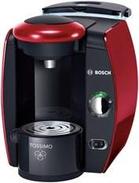 More than 1.7 million coffee makers have been recalled after reports some machines have sprayed hot liquid, leaving 37 people with second-degree burns.
More than 1.7 million coffee makers have been recalled after reports some machines have sprayed hot liquid, leaving 37 people with second-degree burns.
The Tassimo Single-Cup Brewers were recalled Feb. 9 by BSH Home Appliances Corp. of Irvine, California. Some 835,000 machines were recalled in the United States and 900,000 were recalled in Canada. The California manufacturer recalled the defective product voluntarily along with the Consumer Product Safety Commission (CPSC) and Health Canada.
The brewers are defective because they can burst and spray hot liquid and coffee grounds or tea leaves onto consumers. There were a total of 140 reports of the brewers spraying hot liquid. Among the 37 second-degree burns was a 10-year-old Minnesota girl who suffered serious facial and neck burns which required her to be hospitalized.
The defective coffee makers carried the brand names of Bosch and Tassimo Professional Brewers. The Bosch brewers were sold in several colors to consumers between the dates of June 2008 and February 2012 for between $100 and $250. The Tassimo Professional was sold on in black, directly to hotels and food service providers. The brewers were manufactured in Slovenia and China.
Consumers are advised to stop using the recalled coffee makers immediately and contact the firm to order a free replacement T Disc holder part to fix the mechanism. This is the part of the machine that holds the single serve coffee cup.
Consumers can visit www.tassimodirect.com/safetyrecall for the full list of recalled models and to request a replacement part. They can also call the firm toll-free at 866-918-8763.
Click here to read the recall notice from the CPSC.
Read More
Good News for Massachusetts Consumers: SJC Affirms Damages Remedies in Insurance Bad Faith Case
Last week the Massachusetts Supreme Judicial Court issued an important and strongly pro-consumer decision in the case of Rhodes v. AIG Domestic Claims, Inc., 461 Mass. 486 (2012). The decision erased uncertainties created by an Appeals Court decision in the same case (78 Mass. App. Ct. 518 (2010). The decision sends the message that insurance companies will have to pay when they do not treat consumers fairly. Attorney David W. White has written an in-depth summary, which you can read by on our website.
In this case, the plaintiff’s car was hit from behind by an 18-wheel truck. The impact fractured her spinal cord and left her paraplegic. She also suffered broken ribs. She brought claims, along with her husband and her children.
The claims management company was AIG Domestic Claims, Inc. (AIGDC). The company delayed making a settlement offer, then finally made a very low one. Another offer came during trial, this one only slightly better.
The plaintiff rejected all offers and secured an $11.3 million judgement at a trial in Superior Court in September 2004.
Defendant appealed, and AIGDC failed to pay the judgment until after a c. 93A letter was sent and suit was instituted in a second action for violations of c. 93A and c. 176D.
Plaintiff prevailed, but appealed when they were not awarded full damages based upon the judgment.
The Appeals Court affirmed in part, but did not find the proper measure of damages should be based upon the judgement. The SJC granted further appellate review.
The SJC reversed. Affirming its earlier decisions in Hopkins v. Liberty Mutual Ins. Co., 434 Mass. 556 (2001) and Bobick v. United States Fid. & Guar. Co., 349 Mass. 652 (2003), the court held that plaintiffs did not have to show how they would have answered a settlement offer, if it had come. Rather, the court stated, “[i]t has been and remains the rule that the plaintiffs need only prove that they suffered a loss, or an adverse consequence, due to the insurer’s failure to make a timely, reasonable offer; the plaintiffs need not speculate about what they would have done with a hypothetical offer that the insurers might have, but in fact did not, make on a timely basis.”
The court also affirmed the trial court’s findings that the underlying insurer, Zurich, was not liable for violations of c. 93A.
The court held that the underlying judgment of $11.3 million should be the basis of the c. 93A judgment, and that it should be doubled.
Read more about this decision on our website.
About Attorney David W. White and Breakstone, White & Gluck
Breakstone, White & Gluck is a Boston personal injury firm which represents clients who have been injured in car accidents, truck accidents and other accidents. We have decades of experience handling c. 93A claims including insurance bad faith claims in Massachusetts. We look forward to the opportunity to assist referring counsel and clients with their 93A and c. 176D claims.
Attorney David W. White is a partner at the firm and is a past president of the Massachusetts Bar Association. He writes on cases involving c. 93A and c. 176D and is recognized on an expert in Massachusetts insurance laws. He frequently lectures on the insurance matters for Massachusetts Continuing Legal Education. Attorney White is a past president of the Massachusetts Bar Association.
Massachusetts Car Accident Insurance: What Coverage Do You Need?
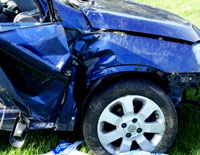 Buying car insurance in Massachusetts can seem complicated, with various types of coverages and state laws which have changed in recent years. The state requires all drivers to carry some level of insurance, but in 2008, drivers gained new buying options as Massachusetts moved away from a highly regulated industry to managed competition. At the same time, insurers have started changing their policies, so not all companies use the standard Massachusetts policy.
Buying car insurance in Massachusetts can seem complicated, with various types of coverages and state laws which have changed in recent years. The state requires all drivers to carry some level of insurance, but in 2008, drivers gained new buying options as Massachusetts moved away from a highly regulated industry to managed competition. At the same time, insurers have started changing their policies, so not all companies use the standard Massachusetts policy.
In the past, the state had set rates. But under “managed competition,” each insurance company can set its own price and compete for consumers’ business.
If you are a Massachusetts driver, you should shop around to obtain the best rates while still buying adequate insurance to protect yourself in a car accident. Here, the Boston car accident lawyers at Breakstone, White & Gluck offer some tips on what to consider before purchasing auto insurance for you and your family:
Compulsory Coverage
Massachusetts requires drivers to buy basic car insurance coverage, including:
- Bodily Injury to Others: $20,000 per person, $40,000 per accident
- Personal Injury Protection: $8,000 for medical bills and lost wages
- Bodily Injury from an Uninsured Driver: $20,000 per person and $40,000 per accident
- Damage to Another Person’s Property: $5,000
Optional Coverage
The compulsory coverage provides insufficient protection for car accidents. These other insurances offer additional protection.
- Bodily Injury: You can buy up to $500,000 per person per accident. If you cause a serious motor vehicle accident, this protects you from claims against your personal property.
- Underinsured Auto: You could be injured by another driver who does not have car insurance. You can protect yourself by purchasing up to $500,000 in coverage per person per car accident.
- Medical Payments: This coverage pays for medical expenses that exceed your $8,000 PIP coverage. You can obtain an extra $10,000 in coverage for a small cost.
- Collision Comprehensive. This coverage pays for damages to your vehicle in a car accident. This coverage is paid by the policy of the driver found to be at fault. Many people choose a high deductible to save money on their policy price, but this can cost you far more if you caused a car accident and have to pay a deductible for your own vehicle.
Click here for information on auto discounts and how to get additional insurance coverage through your homeowners’ insurance policy.
Related Blogs, Articles and Websites
Multaq Heart Drug Warning from FDA
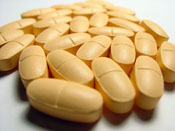 After years of close monitoring and label changes for Multaq, the Food and Drug Administration (FDA) has issued a new warning that the heart drug places some patients at an increased risk for serious cardiac events including death.
After years of close monitoring and label changes for Multaq, the Food and Drug Administration (FDA) has issued a new warning that the heart drug places some patients at an increased risk for serious cardiac events including death.
Multaq is used to treat various conditions, including patients with permanent Atrial Fibrillation (permanent AF). This is the most serious form of AF, which is an abnormal heart rhythm. The two other types are paroxysmal AF and persistent AF.
Permanent AF is a chronic condition in which sinus rhythm cannot be sustained despite treatment.
The FDA issued its Dec. 19, 2011 safety notification based on its monitoring of a 10-year study. In the communication, the FDA stated Multaq doubles the rate of cardiovascular death, stroke and heart failure in patients with permanent AF. The FDA advised healthcare professionals to:
- Not prescribe Mutlaq to patients with AF who cannot or will not be converted into normal sinus rhythm (permanent AF).
- Monitor heart rhythm by electrocardiogram at least once every three months.
- If the patient is in permanent AF, Multaq should be stopped or the patient should be cardioverted.
- Multaq is indicated to reduce hospitalization for AF in patients in sinus rhythm with a history of non-permanent AF.
- Patients prescribed Multaq should receive antithrombatic therapy.
The study the FDA acted on was called called the Permanent Atrial Fibrillation Outcome Study Using Dronedarone on Top of Standard Therapy (PALLAS). The study was stopped early in July 2011. The FDA said it will release more information as it becomes available.
Multaq Background
Dronedarone is the generic name for Multaq. It was approved by the FDA in 2009 to treat several conditions, including permanent AF. Manufactured by Sanof-Aventis, the drug has been prescribed to 500,000 people around the world.
Since 2009, Multaq has been subject to several FDA actions, including in 2010 a revised warning noting cases of worsening heart failure in some patients. In February 2011, the FDA changed the warning label to state that Multaq should be discontinued if liver damage is suspected.
Related Blogs and Websites
- Actos: FDA Warning About Bladder Cancer
- DePuy Hip Recall: Insurers Seek to Collect Settlements
- Transvaginal Mesh: What to Know If You’ve Been Injured
Car Accidents in Massachusetts Would Be Reduced Under Cell Phone Ban
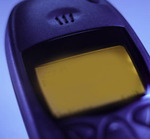 A ban on using hand-held cell phones behind the wheel was approved by the Massachusetts Legislature’s Joint Transportation Committee this week.
A ban on using hand-held cell phones behind the wheel was approved by the Massachusetts Legislature’s Joint Transportation Committee this week.
On Thursday, the committee voted 8-0 to move forward the bill which advocates say will reduce car accidents, driving injuries and motor vehicle deaths. Some lawmakers did not vote on the ban, which was also discussed in 2010. That year, a new law took effect to reduce motor vehicle accidents by banning drivers under 18 from using cell phones to talk or text. All other drivers were banned from texting while driving.
Under the proposed cell phone ban, drivers would still be allowed to use hands-free cell phones with Bluetooth and other devices. Many safety advocates say hands-free cell phones are safer and this type of ban will help police better enforce the law. Right now, police say it is difficult to differentiate between drivers dialing a phone number and sending a text message.
As a result, police only wrote 1,100 tickets for texting while driving in the law’s first year, according to the Department of Transportation. This averages one for every 200 speeding tickets issued among Massachusetts’ 4.7 million drivers in the same period.
The hand-held cell phone ban will now be sent to the Massachusetts House of Representatives and Senate. The Ways and Means Committee may also consider the financial aspects of it.
If approved, Massachusetts will become the 10th state to ban any type of cell phone use while driving.
The national debate over cell phone use and car accidents has been growing stronger.
In December, the National Transportation Safety Board (NTSB) called for a nationwide ban on driver use of portable electronic devices (PEDs) while operating a motor vehicle. U.S. Secretary of Transportation Ray LaHood said he opposed including hands-free cell phones.
Click here to read more about the proposed hand-held cell phone ban in The Boston Globe.
Read More
Massachusetts Considers Ban on Cell Phone Use While Driving
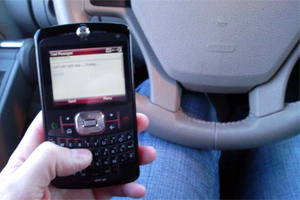 Massachusetts lawmakers will consider tougher laws this week to reduce car accidents associated with cell phone use.
Massachusetts lawmakers will consider tougher laws this week to reduce car accidents associated with cell phone use.
The Legislature’s Joint Commission on Transportation will hold a hearing Tuesday to discuss several bills. One proposed measure would only allow drivers to use hands-free cell phones. Another would ban drivers from using any type of cell phone within school zones.
Just nine states and the District of Columbia prohibit all cell phone use while driving. Massachusetts joins 34 other states and the District of Columbia in banning texting while driving for all drivers.
In December, the National Transportation Safety Board (NTSB) recommended a nationwide ban on driver use of portable electronic devices (PEDs) while operating a motor vehicle. The recommendation would ban use of all non-emergency portable electronic devices and the board wants to follow the NHTSA’s model of high-visibility enforcement and focused safety communication campaigns. U.S. Secretary of Transportation Ray LaHood is opposed to including hands-free cell phones in the ban.
Texting while driving, cell phone use and other distracted driving behavior causes a large number of car accidents across the country each year. In 2009, 16 percent of fatal motor vehicle accidents involved texting while driving and other distracted behavior. Twenty percent of car accidents resulting in injury involved distracted driving.
Massachusetts’ ban on texting while driving took effect Sept. 30, 2010. But Massachusetts, like other states, has found its ban hard to enforce. The law bans texting while driving in a moving car, as well as when behind the wheel at intersections. But critics say it is often difficult to tell whether a driver is texting or dialing a number.
Another challenge is Americans are sending more text messages than in the past. In June 2011, more than 196 billion text messages were sent in this country, a 50 percent increase from June 2009, according to CTIA, the international association for the wireless telecommunications industry.
There is research which shows any type of cell phone use engages a driver enough to create a dangerous distraction. A Carnegie Mellon University study found using a cell phone behind the wheel reduces the amount of brain activity associated with driving by 37 percent. And a study from the Virginia Tech Transportation Institute (VTTI) found that headset cell phone use is not substantially safer than hand-held use.
But when drivers text behind the wheel, they are 23 times more likely to get into a car crash than normal, the VTTI study found. Sending or receiving a text takes a driver’s eyes off from the road for an average of 4.6 seconds, which is the full-length of a football field for a car traveling at 55 mph.
Read more about Massachusetts’ proposed bans on cell phone use. Read more about the NTSB’s recommendation to ban driver use of ban portable electronic devices.
Read More
Study: Insurance Industry Pushes for ‘Hard Market,’ Rate Increases
 A new study shows the property/casualty insurance industry creates periodic crises in which insurance becomes unaffordable or unavailable. It alleges the industry is currently trying to create such a crisis now to drive up profits.
A new study shows the property/casualty insurance industry creates periodic crises in which insurance becomes unaffordable or unavailable. It alleges the industry is currently trying to create such a crisis now to drive up profits.
The study was undertaken by the Americans for Insurance Reform (AIR), a coalition of nearly 100 consumer and public interest groups which represent more than 50 million people. Casualty and property insurance is important because it provides coverage for accidents for individuals, businesses and governments. Rate hikes could stifle their ability to operate and prevent accident victims from obtaining fair compensation.
The Study
The study is called “Repeat Offenders: How the Insurance Industry Manufactures Crises and Harms Americans.” It presents data showing the typical insurance rate cycle for and the dramatic rise in insurers’ current surplus – the amount insurers set aside to pay estimated future claims. In 2010, the insurers had an all-time high $580 billion surplus on hand, more than double the amount in 1996.
The United States has been in a “soft market,” since 2006, during which insurance rates have been stable and dropped in states where no tort reform has been enacted.
But the AIR report states in early 2011, the insurance industry began pushing the country into a “hard market,” when rates skyrocket and become unaffordable. It says the insurance industry is attempting to use Hurricane Irene as another push into a hard market. The next step, AIR says, is the insurers will deny the cycle’s existence and hire lobbyists who call for tort reform legislation.
Call for Action
AIR is releasing its report to all 50 state insurance commissioners, the new Federal Insurance Office and key members of Congress. It calls for the following steps to protect property owners, car owners and business owners who carry insurance as well as accident victims:
Data Disclosure. AIR calls on the industry to provide meaningful insurance data to state insurance departments. They ask that officials be allowed to substantiate or refute allegations about the industry’s health for accident coverage and recent legal action.
State Repeal of Anti-Competitive Laws. AIR said states should enact stronger regulation and oversight of the industry, while also repealing anti-competitive laws.
Repeal Federal Anti-Trust Exemption. The AIR calls on Congress to repeal the federal anti-trust exemption under the McCarran-Ferguson Act and have the new Federal Insurance Office review the impact of the McCarran-Ferguson Act on consumers.
Read More
Safe Driving Must Be a Priority During Holiday Season
 Dangers increase for drivers in the period between Christmas Eve and New Year’s Day. There is more traffic on the road, drivers are often growing accustomed again to operating in the snow and many people are drinking and driving. These factors often lead to an increase in motor vehicle accidents.
Dangers increase for drivers in the period between Christmas Eve and New Year’s Day. There is more traffic on the road, drivers are often growing accustomed again to operating in the snow and many people are drinking and driving. These factors often lead to an increase in motor vehicle accidents.
The Boston motor vehicle accident lawyers at Breakstone, White & Gluck, urge you to drive safely and offer these tips:
For Drivers and Passengers
- The driver and all passengers should wear seat belts.
- Have a Designated Driver.
- Carry the phone number for a cab company. Call them beforehand to ask any questions so you are not reluctant to call them later.
- Consider taking public transportation, such as a bus or subway if available.
- Stop drinking a few hours before you plan to leave.
- Stay where you are until you are sober enough to drive.
- Travel slow. More drivers and pedestrians may be on the roads for the holidays.
- If possible, familiarize yourself with your driving route during daylight hours and before the holiday.
- Parents should limit the driving of teenagers on the holidays to avoid car accidents.
For Party Hosts
- Offer both alcoholic and non-alcoholic beverages.
- Have a cab company’s phone number ready.
- Stop serving alcohol early.
- In Massachusetts, you have a legal responsibility to make sure your guests do not leave your home under the influence. If you are hosting a party and serving alcohol, learn about the Massachusetts social host liability law.
Carbon Monoxide Poisoning a Risk in Winter
 With the official start of winter just days away, it is a good time to get your home and automobile ready. While some types of home heating equipment require little preparation, it is best to review yours before the snowfall.
With the official start of winter just days away, it is a good time to get your home and automobile ready. While some types of home heating equipment require little preparation, it is best to review yours before the snowfall.
Winter home heating carries the risk for fires and carbon monoxide poisoning, which can result from a build-up of the invisible, poisoning gas. Each year, half of all home fires occur in the three months from December to February, when home heating equipment is most used. Some 1,500 Americans die each year from carbon monoxide poisoning, while more than 10,000 suffer carbon monoxide injuries, according to Children’s Hospital Boston.
Smoke and Carbon Monoxide Detectors
Make sure your smoke detectors and carbon monoxide alarms are working and properly placed. Massachusetts requires smoke alarms be installed on every habitable level of a residence as well as in basements. Carbon monoxide detectors are also required on every habitable level of the home. Additional units are recommended outside of bedrooms and sleeping areas.
Chimneys
Get your chimney professionally cleaned once a year. Report any cracks or water leaking. Fall is the best time for a cleaning. Creosote can build up in the chimney over time, lead to blockages and produce carbon monoxide. Creosote is created when firewood does not burn correctly, when wet or soft wood is placed in the fireplace and by closing the fireplace before the wood is fully burned.
Fireplaces
Open the fireplace damper before lighting and keep it open until the ashes are cool. Never close the damper before going to bed if the ashes are still warm. An open damper may prevent the build-up of poisoning gases. Light your fire with matches. Never use gasoline, charcoal lighter or another fuel because the vapors can explode. Make sure you have no flammable materials near open flames.
Furnace Vents
Your heating system will likely have a vent on your home’s exterior. The vent will have two pipes, one of which lets air in and one of which sends air back out. Make sure both of these pipes are kept clear of snow to avoid carbon monoxide from building up in your home.
Cars
Check your snow tires and decide whether you need new ones. Check your tires’ air pressure using a gauge, which you can purchase at an auto parts store. Put an emergency kit inside your car and make sure it includes a neon-glow vest, snacks, a flash light and other essential supplies. Click for a full list of emergency safety supplies.
If you have a garage, make sure you do not warm up your car inside it with a closed door. Pull your car out and heat it in the driveway to prevent carbon monoxide poisoning.
For more information about winter safety, visit these sites:
Home Safety Tips for a Safe and Healthy Winter, Home Safety Council.


